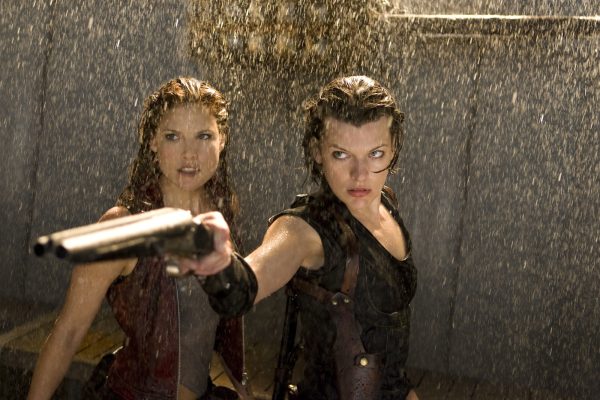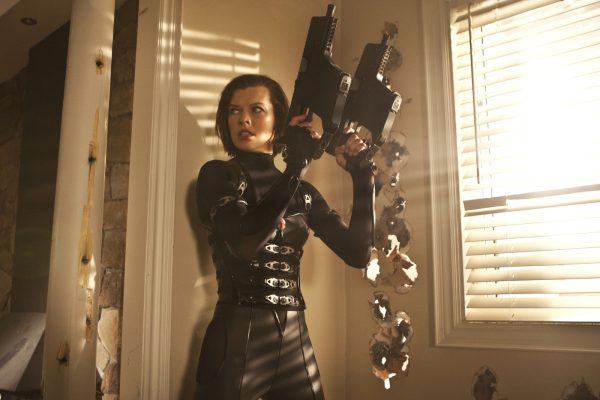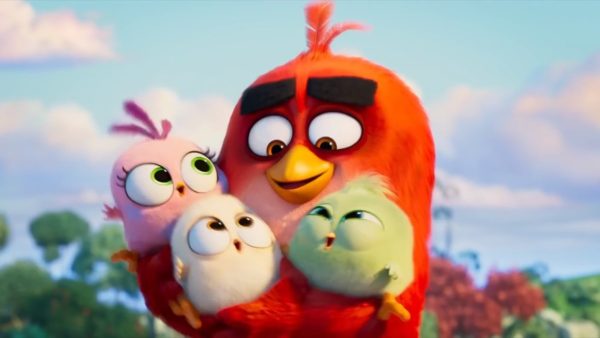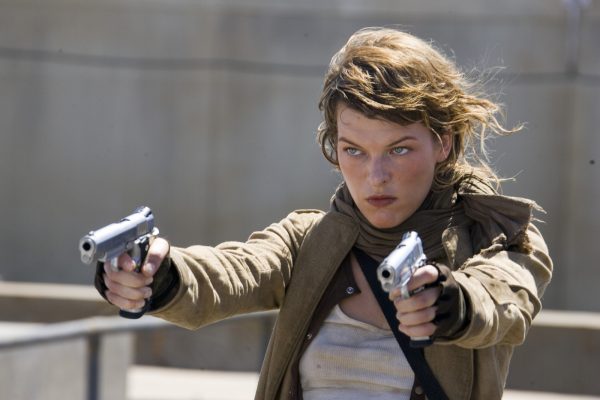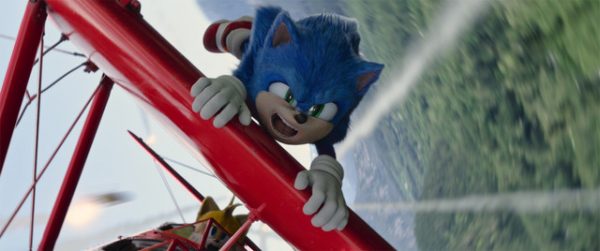Casey Chong ranks video game movie sequels from worst to best…
Video game movies tend to get a bad rap since filmmakers can’t seem to crack the code in giving what the fans want (remember the dismal Super Mario Bros. back in 1993?) But some of them manage to score enough profit to warrant a sequel or two and with the much-anticipated Sonic the Hedgehog 3 now in cinemas [read our review here], we rank video game movie sequels from worst to best…
BloodRayne: The Third Reich (2010)
So, is the third time a charm for Uwe Boll in the BloodRayne film franchise? Forget about any traces of improvement here in BloodRayne: The Third Reich with the story this time taking place during World War II and the returning Natassia Malthe now fighting against the Nazis in Europe. On paper, it sounds like fun but the execution tells a different story altogether.
The story is the weakest point here with stilted dialogue and not even the presence of Clint Howard playing a mad Nazi doctor can salvage much of this mess. Uwe Boll tries to switch up his directorial style in the action department, favoring the jittery camerawork to give it a semi-documentary feel. However, the action lacks a much-needed visceral flair while the pacing is off, making its otherwise compact 76-minute running time feel like a slog to sit through.
BloodRayne 2: Deliverance (2007)
The first BloodRayne’s Kristanna Loken declined to return due to scheduling conflicts with her Painkiller Jane series, resulting in Natassia Malthe replacing her as the half-human/half-vampire Rayne. At least she bears a better physical resemblance to the video game version. Too bad her acting is so disappointingly wooden that you might end up wishing Loken returned for the sequel instead.
BloodRayne 2: Deliverance boasts a potential premise: a vampire action-horror crossed with Western genre but Uwe Boll botches the opportunity to turn it even into a so-bad-it’s-good sequel. The story is flat while an obvious nod to Clint Eastwood’s Unforgiven, notably on the newspaper reporter (Chris Coppola’s Newton Piles) helping out Billy the Kid (Zack Ward) to write a great story about his legacy, barely matters much. The sequel suffers from a tedious pace to the point it feels like watching the paint dry, with lackluster action all around.
Mortal Kombat: Annihilation (1997)
After directing 1995’s Mortal Kombat, Paul W.S. Anderson opted against returning for the sequel in favour of the sci-fi horror Event Horizon, with John R. Leonetti, who lensed the first movie, taking over the director’s seat for the first time. Too bad Mortal Kombat: Annihilation reeks of an inexperienced first-time director trying to make a good impression. It’s DOA right from the get-go with the poorly executed opening scene shot in a flimsy CGI background, and it doesn’t get any better as the movie suffers from a monotonous tone, complete with choppily-edited action set pieces and subpar special effects, despite getting a bigger budget compared to the first movie.
Only two actors from the 1995 original return for Mortal Kombat: Annihilation in Robin Shou and Talisa Soto as Liu Kang and Kitana, but neither of them can do much to salvage this train wreck of a sequel. Then, there’s James Remar, who is disappointingly miscast as Raiden after replacing Christopher Lambert. The sequel also introduces a new antagonist in the form of Brian Thompson’s Shao Kahn but he’s no match for Cary-Hiroyuki Tagawa’s Shang Tsung from the first movie.
Silent Hill: Revelation (2012)
On paper, M.J. Bassett seemed like an ideal replacement to direct the Silent Hill sequel, with previous experience in horror (Deathwatch) and fantasy (Solomon Kane) Silent Hill: Revelation fails to live up to Christophe Gans’ first film. Gone are the eerily atmospheric look and feel of the first movie, which perfectly captured the video game’s aesthetics. Then, there’s the absence of the first film’s Radha Mitchell, who is sorely missed in this sequel.
Silent Hill: Revelation tries to get busy with lots of attempts to generate spooky visuals but they barely evoke a sense of ominous dread, let alone conjuring up effective scares. Blame it on the oversaturated color grading that looks too vibrant for its own good, making everything feel like a cheap virtual reality horror instead of something moody as it should be. The CGI is tawdry and it doesn’t help either when the lead protagonist played by Adelaide Clemens as Heather Mason suffers from wooden acting and stilted dialogue.
Resident Evil: The Final Chapter (2016)
Is Paul W.S. Anderson saving the best for the last in this sixth and final installment of the long-running Resident Evil franchise? Despite the title, the franchise ends with a whimper.
The story boasts a potentially thrilling setup: Alice (Milla Jovovich) has only 48 hours to return to the Hive in Raccoon City after the events of 2012’s Resident Evil: Retribution. But the race-against-the-time premise designed like a video game-like story, complete with various obstacles along the way is hampered by terribly choppy editing and jittery camerawork. This makes the action scenes frustrating to watch while Anderson’s overreliance on cheap jump scares grows annoying after a while. Milla Jovovich still impresses with her physically demanding performance as Alice while Iain Glen provides adequate support in his dual role as the religious-fanatic clone and conniving Dr. Alexander Isaacs.
Resident Evil: Apocalypse (2004)
Paul W.S. Anderson backed out from the director’s chair after the first movie with veteran second-unit director Alexander Witt from Speed and The Italian Job taking over the duties for Resident Evil: Apocalypse. The result? A feeble attempt to mesh Resident Evil 2 and Resident Evil 3: Nemesis games.
The story is not much different from the first movie and despite Witt’s experience in stunts and action sequences, he botches the second Resident Evil entry with the overreliance on the frantic shaky-cam aesthetics. It was frustrating to watch no matter how many action set pieces are crammed into this sequel. We get the same old Milla Jovovich strutting her stuff as usual while the movie also introduced Jill Valentine played by Sierra Guillory.
Lara Croft: Tomb Raider – The Cradle of Life (2003)
Enlisting Jan de Bont to follow original director Simon West seemed like an inspired choice for the second film in the Tomb Raider franchise and yet, the sequel lacks either the propulsive flair or pulpy fun that defined his Speed and Twister heyday. Lara Croft: Tomb Raider – The Cradle of Life, which turned out to be Jan de Bont’s final directorial effort up until this point, leaned more towards his creative and financial failures like The Haunting and Speed 2: Cruise Control.
Angelina Jolie reprises her titular role with her sex appeal and action-heroine persona remaining the highlight, but the story simply goes through the motions and frankly, the whole thing feels like a tepid knock-off of Indiana Jones.
Resident Evil: Afterlife (2010)
The fourth film in the franchise, Resident: Evil Afterlife was the first to be shot in 3D, and it’s more of a technological gimmick here (don’t expect Avatar level). The movie marks the return of Paul W.S. Anderson, his second directorial effort in the series after the 2002 original, and fans can expect his usual visual aesthetics: lots of stylized slow motion during the action scenes (see the set piece where Milla Jovovich’s Alice in a skintight leather suit taking down an army with katanas and shuriken), and of course, plenty of CGI blood and violence.
The fourth Resident Evil movie made Shawn Roberts’ Albert Wesker the main antagonist, with his Agent Smith-like superhuman strength culminating in a violent but cheesy fight scene against Alice, Ali Larter’s Claire Redfield and Wentworth Miller’s Chris Redfield.
Resident Evil: Retribution (2012)
The first 15 minutes of Resident Evil: Retribution is easily one of the most entertaining scenes in the Resident Evil franchise: a cool, slow-motion opening-credits sequence that runs backwards followed by a scene revolving around Alice’s (Milla Jovovich) hallucinatory zombie outbreak in a suburbia. Returning director Paul W.S. Anderson does a good job here showcasing his directorial prowess in mixing effective tension and suspense. Then, there’s a highly stylized fight scene that takes place in a simulated night time Tokyo, complete with Asian zombies.
It’s too bad the movie quickly loses steam for the remainder of its 96-minute running time. The subsequent action grows repetitive and even lacks the same propulsive flair seen in the earlier scenes. The story is patchy and incoherent. Milla Jovovich remains the VIP in this otherwise botched entry.
The Angry Birds Movie 2 (2019)
The first Angry Birds Movie delivered fun, candy-colored entertainment although the sequel, which arrived three years later, pales in comparison with the vibrant 2016 original. One of the biggest problems lies in its mostly hit-or-miss, loosely connected vignette-style storytelling. The jokes are abundant with kid-friendly juvenile gags and toilet humor but most of them feel like stale leftovers.
The Angry Birds Movie 2 isn’t an outright disaster however with enough redeeming qualities coming from the returning voice cast including Red (Jason Sudeikis), Chuck (Josh Gad), Bomb (Danny McBride) and Leonard (Bill Hader). Credits also go to franchise newcomers including Rachel Bloom as the nerdy female bird Silver and Leslie Jones as the obnoxious Zeta. Interestingly, the sequel gets an above-average amusing subplot revolving around the adventure of the three cute little hatchlings trying to locate their misplaced eggs.
Resident Evil: Extinction (2007)
Genre specialist Russell Mulcahy brings a distinctly B-movie vibe to the action-horror genre in Resident Evil: Extinction, which marks the third film in the franchise. The story echoes the Mad Max style with a zombie apocalypse twist while the harsh, sun-baked Nevada setting offers a refreshing change of pace from the first two movies. Milla Jovovich is looking good here reprising her role as Alice and there’s the introduction of Claire Redfield from the Resident Evil 2 game played by Ali Larter.
Resident Evil: Extinction benefits from a brisk pace and Mulcahy’s genre know-how direction in meshing thrilling action set pieces and gory zombie horror. He also elevates the movie with his arresting visual prowess, notably the iconic Alfred Hitchcock’s The Birds-like homage featuring a flock of zombie crows extinguished in a sky of fire with the camera rotating around the telekinetic Alice at 360 degrees from the ground above.
Sonic the Hedgehog 2 (2022)
Sonic the Hedgehog 2 represents the classic case of sequelitis, where the follow-up to the 2020 hit is more of everything. Even the sequel is expanded into a two-hour length from the first movie’s 99-minute running time. Returning director Jeff Fowler gets lost in the sluggish midsection, evidently in Sonic and Tails’ (voiced by Ben Schwartz and Colleen O’Shaughnessey) against the Siberians in the bar and Rachel (Natasha Rothwell) and Randall (Shemar Moore)’s wedding subplot.
Some of the jokes are either dated or miss the mark. Still, that doesn’t mean Sonic the Hedgehog 2 turns into roadkill. The sequel benefits from Sonic and Tails’ amusing buddy-comedy chemistry while the introduction of Idris Elba’s Knuckles is a nice addition. With a bigger budget, the special effects also improve significantly in the sequel and offer up a few thrilling action set pieces, notably the IceCap Zone snowboarding scene inspired by Sonic the Hedgehog 3.
Casey Chong








